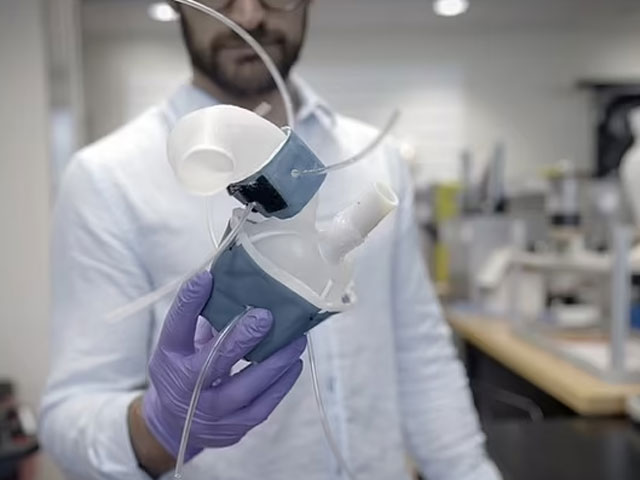Massachusetts: Scientists are trying to create a 3D-printed replica of the human heart to improve life-saving technology.
These models simulate the blood flow and pressure of patients’ failing hearts, allowing surgeons to improve the valve replacement process and select the best valve.
Heart valve prolapse occurs when a person’s natural valves become dysfunctional or damaged and prevent the heart from working as it should.
Prevention of potential leakage and regurgitation can eliminate the need for multiple potential heart operations in the future.
The size of the artificial heart valve market was estimated to be around $7 billion in 2021, but this volume is expected to grow in the coming decades as the population ages.
Before this innovation through 3D printing, last December, scientists at the National Eye Institute in Maryland created eye tissue from stem cells through 3D printing.
Experts from the Massachusetts Institute of Technology (MIT), Cleveland Clinic and other institutions have created this artificial heart from the heart scans of 15 patients. These patients were suffering from narrowing of the heart valves due to which the blood flow was obstructed.
(function(d, s, id){
var js, fjs = d.getElementsByTagName(s)[0];
if (d.getElementById(id)) {return;}
js = d.createElement(s); js.id = id;
js.src = “//connect.facebook.net/en_US/sdk.js#xfbml=1&version=v2.3&appId=770767426360150”;
fjs.parentNode.insertBefore(js, fjs);
}(document, ‘script’, ‘facebook-jssdk’));
(function(d, s, id) {
var js, fjs = d.getElementsByTagName(s)[0];
if (d.getElementById(id)) return;
js = d.createElement(s); js.id = id;
js.src = “//connect.facebook.net/en_GB/sdk.js#xfbml=1&version=v2.7”;
fjs.parentNode.insertBefore(js, fjs);
}(document, ‘script’, ‘facebook-jssdk’));



